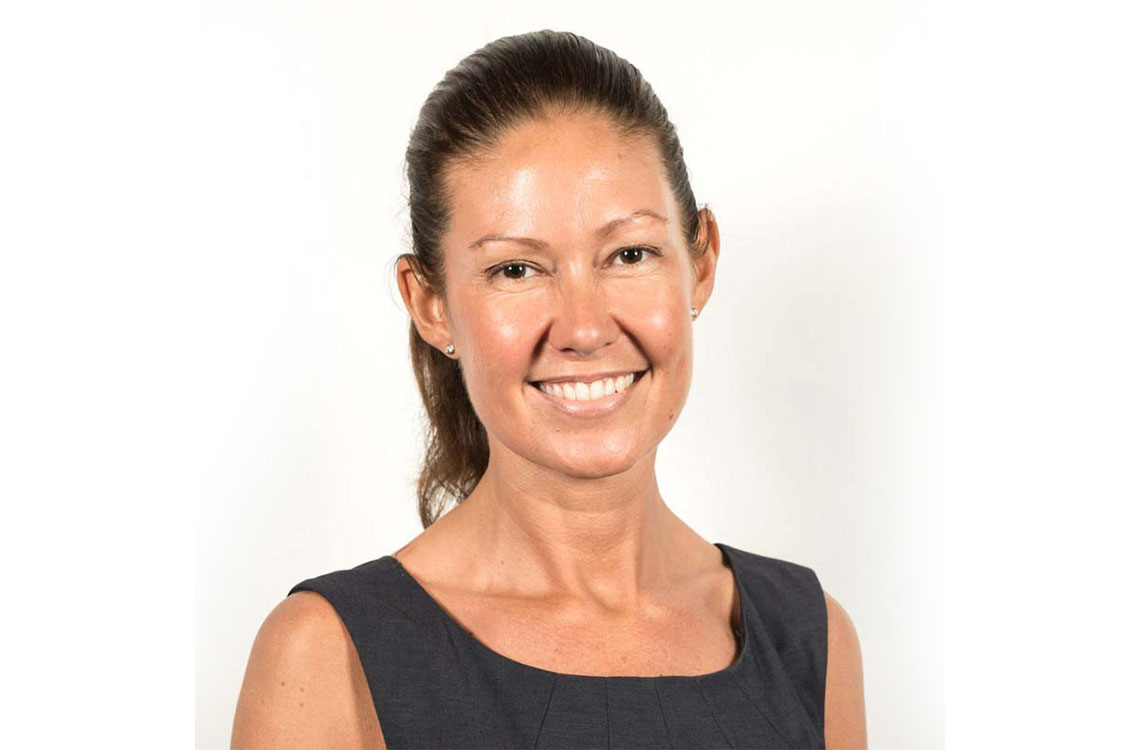How To Unlock High Performance In Your Team Without Causing Burnout With Vanessa Bennett

We all want to ourselves and our teams to be at their most productive. A lot of times, that pursuit of high performance takes a toll on individuals in the form of burnout. There must be a fine balance between getting the best performance from everyone and making sure that they’re thriving while they’re at it. This is what high-performance coach Vanessa Bennett has been studying her whole career. Vanessa is the CEO of Next Evolution Performance, a company that uses neuroscience to help driven leaders and teams optimize their profitability, productivity and energy, and decrease their effort to eliminate burnout. In this episode of People Strategy Forum, she shares neuroscientifically-informed strategies in managing people’s time in the workplace so they can be their best, most productive selves. Whether you’re a leader who’s looking to unlock high performance in your team, or an individual who’s looking for a way to increase productivity without sacrificing your wellbeing, this conversation is a must-follow. Tune in!
—
How To Unlock High Performance In Your Team Without Causing Burnout With Vanessa Bennett
Thank you so much for joining us. I’m Wendy Graham. I’m joined by Sam Reeve and Vanessa Bennett. We’re talking about high performance without burnout. This is such an important topic and I’m so excited to get to dive in deeper with you all. First, I want to welcome you to the show if you’ve never joined us before. Our whole mission is to engage, energize and elevate the workforce experience for people and companies. In each episode, we talk to expert contributors from around the world to hear about out-of-the-box ideas on how to make our time at work with our colleagues the best that it can be and improve the workforce experience and take it from good to great to exceptional.
We talk about a lot of varieties of topics. In this episode, we’re focusing on burnout. Vanessa Bennett, the expert contributor we’re about to introduce to you, says it’s a global phenomenon and universal. This topic is going to apply and be relevant to everybody. Thank you so much for joining us. The show is sponsored by CompTeam, TMA USA and Sam Reeve, our Founder. He’s one of those people that lives the principles that we talk about on this forum. Welcome, Sam. I’m Wendy Graham and I’ll be hosting this session. Sam will be driving the conversation with Vanessa.
I’m passionate about empowering people to embrace change and own their success. This topic is going to be relevant to that. I would like to introduce Vanessa Bennett. She’s the CEO of Next Evolution Performance, a global high-performing coaching business that uses neuroscience to help driven leaders and teams optimize their profitability, productivity and energy, decrease their effort and be able to eliminate sickness, burnout and mental health problems. Welcome to the show, Vanessa.
Thank you so much, Wendy. It’s great to be here.
Vanessa, I would love to hear a little bit more about how you got into this line of work. I know that you hold a Master’s in Science, Psychology, Neuroscience and Mental Health. What drove you to go into this field overall?
It’s so interesting, Sam. I used to work in financial services. I’m a corporate girl by background. My undergrad is a Business degree, a double major in Accounting and Finance. I get that question a lot, “How did you end up here?” When I worked in financial services, I was the head of sales for a global funds management company in Australia and New Zealand. I was running a high-performance team. This also included the global financial crisis. There were a few anxious moments in there but one of the things that I saw on the rise and something that I thought was missing was helping people to perform better.
I was seeing burnout, not in my team. I was leading my team and coaching my team to avoid burnout. I’m also fortunate to work in the fitness industry part-time. I was privy to a lot of information about how to manage your energy, fitness and all of that kind of thing to optimize your performance in the workplace. I was doing a lot of that with our team but I was seeing in financial services generally, especially during the global financial crisis, that burnout was on the increase. People who still had jobs were doing the jobs of three people. They were exhausted.
Around 2012, we were starting to come out of that time. Things were settling down but I did see that there was something in this. Believe me, I’m the most results-driven person I know, especially growing up in a sales environment. It’s highly competitive and target-driven. If these things don’t lead to performance, I’m not interested. I very much thought that there was this side of burnout, which was impacting people. I saw people getting sick physically and mentally. That didn’t need to happen.
There was not a lot of support out there that was helping people around this. Back in 2012, burnout wasn’t recognized as a syndrome by the International Classification of Diseases or the World Health Organization. It was there but no one talked about it. The link between stress and a lot of physical and mental illness was there but no one talked about it. We had a bit of science coming through but not that much. At that point, I was interested in this space. I worked on the basis that I was 95% sure I was onto something and I was 5% freaking out but I thought, “There’s enough here. That’s a thing.”
I took a leap of faith. I was lucky enough to meet my now business partner at the time. I decided to leave corporate and do this. I didn’t desperately want to leave corporate but I did want to do this instead. Consulting was the way to do it. I looked to do that. It’s not the business. Fast forward, as you can see what’s happened with the pandemic, burnout is recognized and all of these things. We were already in a good space to do this. Leadership is hard. Leading people to high performance without burnout is hard. There’s a lot of neuroscience coming through around this concept of what we call cognitive energy.
In its very simplest form, the reason that people are getting burnt out is because they’re overspending cognitive energy. That’s it. It’s that simple in concept but there’s a lot to unpack in terms of why we’re overspending cognitive energy. Neuroscience is still pretty new in the scheme of things. Even in the last few years, there has been a lot more information. In the next 5 and 10, there will be exponentially more research that comes out. We keep at the forefront of that so that we can incorporate that and make it practical in terms of what that research means for what people can do in the workplace to work more effectively and work easier.

Burnout: The reason that people are getting burnt out is because they’re overspending cognitive energy.
If people can get an extra two hours of effective time in their day by understanding and optimizing their cognitive energy, imagine what that would mean to people. That’s what we’re looking at. That flies into all sorts of facets of cognitive energy. It can be structuring days, the mindset side of things, accountability at work, role clarity and all of these things that lead to leading people to high performance. It evolved from there but that’s where we have gotten to. I did see a need for this years ago. I’m so glad that we did because the need keeps increasing.
There’s a lot in there that you said but one of the things I want to back up and talk about a bit is that when you talked about your previous experience in financial services and also health and fitness, those are two industries that are high-powered in themselves. I spent ten years in financial services. I know the pressure that the industry drives and the amount of mindset to always perform better and find those new strategies that are going to increase performance. You are surrounded by people that are in desperate need of this mindset or new skillset that’s going to help them prevent burnout.
When I was in asset management, they always often had interns. A lot of times, those interns would not know how to manage their time and they would run ragged for at least a year or so. Half of them would burn out during that time. That was the industry’s calling card for saying, “If you burn out, then you’re not meant for this industry.” They were looking at those that had the endurance and the ability to be able to handle that workload, manage themselves and go forward. In your experience when you’re looking at these two industries of financial services and health and wellness, have you seen that high drive as a particular trend?
There’s often a mix. People who are quite into their health and fitness are quite driven in business as well. There are two aspects to that there. It used to be a situation where this is high pressure. It was almost like, “Working this way should feel hard. If you can cut it, then you get to stay.” Based on the research and the science that we had at the time, that probably made sense.
If you cast your mind back even to the way that elite athletes would train many years ago, it used to be training people to the point of burnout and then they developed more of these periodization techniques where we train medium, train heavy, pull back and train light so that we manage our performance over time and make sure that if we’re turning up to an event, we’re not turning up to an event exhausted to train. There are a lot of those principles.
Once that started to come in, you saw all of these things around performance and managing energy. The fitness industry and the athletic sporting fields get this way before the corporates do. We were starting to see this emerge in the health and wellness side of things. I teach group fitness classes part-time. That’s always been my thing on top of my full-time job. I’ve had to be pretty organized to make sure that I can get to the class on time and teach everything.
There was a shift that was coming through in terms of making sure that people knew how to manage their physical energy. If you don’t manage physical energy, then you burn out physically. That can be fatigue, muscle tear and all of these things. We need to take that concept to how we manage our cognitive energy and our mental energy in the workplace. It used to be this idea of working hard.
If you don't manage physical energy, you burn out physically. We need to take that concept into how we manage our cognitive energy in the workplace. Share on XThat’s how we’re brought up. That’s how still people are brought up at school, “Work hard. You do better at high school. You get into a better college. You do better at college. You get a better internship and graduate position.” That’s how we’re taught. We’re taught that it should feel hard. Therefore, that becomes a lot of our belief systems. Thankfully, around this cognitive energy research that’s coming out, there’s a lot more to say, “That’s not as productive.” We’ve got a lot more science behind what is being productive and what’s draining our energy.
This is an example. There’s a concept we call continuous partial attention. We used to think years ago that if you were sitting in a meeting, doing emails, looking at your phone at the same time and having notifications, that was productive. They put you in all this thing and try to do three things at once. This whole multitasking era came out, “If you could multitask, then you’re going to get ahead.”
When you put people in an MRI machine, get them to do a cognitively draining exercise and get them to also be looking at other things at the same time, then it takes them longer to do that cognitive task. There are more errors when they do that cognitive task. That’s scientific to say, “Why would you want to work in a way that is taking longer, less productive, more error-prone and draining more energy? No wonder everybody is burnt out.”
There are ways that we can structure our days at work to save this concept of cognitive energy. We call it energy credits. Imagine you’ve got this bucket of energy credits 100 a day. These energy credits are little nuggets of gold. You don’t want to waste them. What’s happening is most people have their energy credits in a bucket but this bucket has leaks that they don’t even know about.
Imagine your little nuggets of goals leaking out and you don’t even realize it. You’re complaining, “I’m tired and it’s my boss’s fault.” Maybe. It’s your boss’s fault if they didn’t teach you about neuroscience and how to conserve your energy but we also need to take responsibility for ourselves. There are so many reasons that we are causing these leaks in these buckets. We need to plug those leaks.
That’s a very powerful visual of thinking about that. When we think about neuroscience, have we defined how it can help in understanding when we have gone too far or when we spent too many of those credits and need to go into a rest period? Is there a way that we can measure that effectively?
The more awareness that we have around how things are meant to feel, the more that we know when it’s not right. Different people will have different feelings when they go into that overwhelmed phase. You’re starting and doing something and you feel like you’re crushing through everything. You keep saying yes to things and take on more things. You’re getting through things and feeling amazing. You keep saying yes to things and then all of a sudden, you are like, “I’m feeling almost paralyzed. I don’t know where to start because I have got so much on. I am exhausted.”

Burnout: The more awareness that we have around how things are meant to feel, the more that we know when it’s not right.
When we start to get to that feeling of overwhelm, that is a part of the brain pretty much shutting down. That’s what we call a psychological threat. Your prefrontal cortex is a part of the brain. We want to make sure we are optimizing its performance. In neuroscience circles, it’s very fussy. It’s called Goldilocks. It needs a whole lot of conditions to be right. Stress is one of those conditions. If we go under too much stress, then the prefrontal cortex effectively stops working because another part of the brain that shares resources with the prefrontal cortex, which is designed to keep us alive, jumps into action. That’s called the amygdala. You probably heard of the amygdala hijack. That stops us from thinking straight.
The time that we need to be able to think rationally is the time when we neuroscientifically can’t think rationally. There’s a bit of a design flaw there. It’s good to keep us alive but not great for getting deadlines met and those things. Sometimes you feel tired. If you get to the end of the day and you feel like you are exhausted and can barely string two sentences together, that’s not normal. The thing is people start to think that is normal and that being exhausted is a way of life. It’s the price that we pay for having these big jobs.
The time that we need to be able to think rationally is the time when we can't think rationally from a neuroscientific point of view. Share on XIt doesn’t have to be that way at all. We want to start normalizing that if work is feeling hard, you are not doing it right. There are things that we can do to make things feel easier. Globally but not all countries, we’re starting to see this talk of the four-day workweek and things like that. That’s the wrong question. If you are stressed getting through 5 days’ worth of work in 5 days and trying to get through 5 days’ worth of work in 4 days, I can’t see how that would be less stressful.
If work is feeling really, really hard, you are not doing it right. Share on XThe neuroscience perspective shows us that we have about four hours a day available for heavy cognitive work. If we all of a sudden decide to work for 4 days because we’re sick of being tired for 5 days, those 4 hours of heavy cognitive energy don’t magically get sprinkled to the other day. We have to sleep and reset our brains. We wake up and then we have the cognitive energy again the next day. Companies are moving to a four-day workweek. They need to realize that they’re losing those four hours a day per person of heavy cognitive energy available.
It doesn’t mean that we don’t want to get to four days eventually. I’m all for that if that works for people but there are so many things that you need to do to make five days feel easier. You might be able to only work for 4 days because you’re getting through more things in less time with less effort but if you all of a sudden go to someone who’s super stressed for 5 days a week, try to fit everything into 4 days a week without coaching them around neuroscience, how to structure their days differently, manage their mindset and all of that thing. There are some challenges there. It’s not that simple.
One thing is in physical fitness, we can train and increase our endurance. Can we do the same with the mind and stretch those four hours?
We can. These studies were done on neuroscientists. They’re pretty smart people. They were able to train it until about six hours. You can stretch it but let’s also remember that most people don’t have that space during the day because of too many internal meetings. That’s another reason why we need to deal with the meeting side of things because that’s another thing that’s draining cognitive energy and stopping us from doing our best work.
People in academia look at us and go, “How do you function?” They like to focus for long periods. They are able to clear their diaries so that they can focus for longer periods to do their research. It would be very naive for the average person working in a business or a corporate role to think, “I can magically train that to six hours,” with all of the external factors going on from meetings and not being able to do the work that they want to do at the time that they want to do it and that kind of thing.
We run a lot of work on how we get people’s time in internal meetings down. Honestly, if you even start with that, that’s a far better starting point than, “Let’s go to four days. Everyone will be way less stressed.” I’m not sure that they will be. There are a lot of factors that are draining people’s cognitive energy in the workplace. Meetings are one of them. Accountability is another one or a lack thereof.

Burnout: There are a lot of factors that are draining people’s cognitive energy in the workplace. Meetings are one of them. Accountability is another one.
There are a lot of people who have the issue of last-minute dumping of work on people. That could be that someone has to do their bit to get to this person and then this person is waiting on that. They have to do their bit to get to the next person. If people aren’t accountable to deliver their bits by the right time, then it puts a squeeze on the last people in the food chain to be able to do their work and get it done. Therefore, it takes away people’s autonomy to work at the times that they want to on certain things. That is causing a lot of burnout for people.
If there’s no accountability culture and you can’t have an outcome-based culture without accountability, there’s a lack of accountability there because those frameworks haven’t been coached properly and leaders are not holding people to account. You start to lose the effectiveness there as well. A lot of people are not holding people to account because they don’t have the frameworks in place. It feels like a typical conversation.
If you’re tired, you don’t want to have a difficult conversation so you let it go. We’re also getting people to say, “I can get that done by a certain time,” because saying yes is the quickest way to get that person out of their face and saves cognitive energy but in the long run, that doesn’t work. It’s a vicious chicken and egg cycle. If people are tired, then they’re not working in a way that is going to promote ease of working, which means they’re going to become even more tired.
To do this effectively from a team-based approach, everybody needs to be on the same workout regime. They have to be bought into the same mental alignment model. If you have three members on your team, two of them have the same mental workout routine and then the other one is not and they procrastinate, it throws off the whole cycle and the whole teamwork.
It’s so true and interesting. There’s a lot of research. When you look at research on high-performing teams, people want to work with other people that share their values. If you look at some of the values of high performance or if you did a values assessment to come up with people’s top five values, high performers will generally have at least one of their values in there around performance, results, achievement or something to do with that. If you don’t have teammates that also share those values, that can be a source of frustration. You got an extra hole in your energy credit budget.
People want to work with other people who share their values. Share on XAnother thing you mentioned before we got into the concept of teams is you were talking about how the way that we’re working is a bit crazy when we think about academia. If we were to restructure ourselves to be more efficient as far as making sure that meetings are optimized and so forth, what are the other things that we can do to optimize ourselves more effectively? Is it creating blocks of time when our heads our down? What are your thoughts there?
Firstly, we need to spend a lot less time in internal meetings. That will allow us to have more control over how we structure our days. The first thing is to understand the hours of power. What are your most productive hours in your days? It’s going to be different for everybody but if you can highlight the ones that are your foremost productive, that should be when you are not doing internal meetings unless it’s a heavy internal meeting in which case, that’s fine. Ideally, we want to make sure that we’ve got that plank space in that diary, which means that we should be blocking out that time.
If your four hours of power are blocked out ad infinitum, it makes it a lot harder for people to book time over the time when you don’t want to be in meetings. To take back control of your diary, you have to block time in there to do the work. People are like, “I don’t get anything done because I’m in internal meetings all day.” Did you block meetings with yourself to get the work done? When you do that, then you’re able to get more done in less time. If you optimize your 4 hours of power, you will get done in 4 hours which most people will get done in 6 hours.
Call me crazy but I don’t want to spend 6 hours doing something that I can do in 4. That seems crazy to do it any other way. If we can get through more in less time with less effort, then freeze it up so that we’re not feeling like we’re getting burnt out and make sure that we’re doing the heavy cognitive tasks in that time. People get excited by doing the fun stuff when they’re in that time but that means you have to do the heavy stuff when you are lower on cognitive energy. That’s the bit that goes awry.
Maximize your four hours of power. We have an online course to help people to understand how to do that, what are those hours of power, how you should be working in those times and how you define all the tasks that you do, whether they’re heavy cognitive energy, medium cognitive energy or light use of cognitive energy. Make sure that you’re doing the right task at the right time.
Attention span is also an interesting one at play here. Neuroscience says that the average attention span is about 45 minutes but that’s average. Some people have a very short attention span and some people have a longer attention span. If you try to work at an attention span that is different from what is yours, naturally it will feel harder. If someone with a short attention span has to focus for long periods, they’re great for twenty minutes and then they’re drifting off and causing havoc to other people. It feels harder for them to do that. Likewise, if you have someone who wants to sit down and focus for a long time and you consistently interrupt them every twenty minutes, that’s draining for them.
Help people to work in blocks of time that are more natural with their attention span. We have what we call a pace indicator. We help people to measure what is their natural attention span but also what are they working at. Where’s the gap? The bigger the gap between the work pace and the natural pace, then the bigger the propensity for burnout. It’s a super useful tool to be able to help people to make these little tweaks. They’re not hard. They’re the big ones.
The other thing that’s draining is people doing this continuous partial attention. Your ability to focus on one thing at a time even if you have a short attention span or your ability to do one thing at that time, switch to something else and do that one thing is going to become a superpower because all of our devices and our social media are designed to become addictive, which means it activates our dopamine and our reward system to stop us from focusing, which is frightening.
This is starting to be a massive drain on people’s attention leading to people’s burnout. I have a general theory that if you are in a meeting, especially if it’s virtual and you are trying to send an email at the same time, then you should get out of the meeting. If you even think you can send an email at the same time, you shouldn’t be in that meeting.
Only active participants should be in that meeting. Whether that’s a shorter period or not at all, rotating participants or whatever it is, we need to make sure that people are structured so that they can focus on one thing at a time because it’s continuous partial attention. It’s draining our energy and our productivity. It’s even changing the way that we breathe and the shape of our skulls. It’s forcing us into the same principles as sleep apnea.
Unsurprisingly, I’m hearing a lot of mind-body connections because of your background. Here’s a quick interesting story about when I was on the beach. I’m on vacation in Hawaii. I was on the beach with my wife. She was reading this book. It’s hot. I don’t like being on the beach because I don’t like sitting in the sun and so forth. I’m dying of heat. I look over at her. She’s reading her book. Suddenly, I see her get these goosebumps on her arm.
I’m like, “How do you get goosebumps when it’s 90 degrees outside in the sun?” She was reading a part in her book, which was chilling that caused that body response. It was very fascinating to see the mind-body connection there even in an environment where you’re under stress or this extreme heat. Your body can react differently because of what’s going on in the brain. It was a powerful moment.
It’s so true. The mind can play some tricks on us but the good thing is we can also trick the mind to make it work for us rather than against us.

Burnout: The mind can really play tricks on us, but the good thing is we can also trick the mind to make it work for us rather than against us.
Let’s talk a little bit about that because there are two different things when we’re thinking about developing our minds. There’s cognitive resilience and also cognitive flexibility. You talked to us about a lot of strategies on how to become more resilient and stretch the time that we have to be focused and how to best use that time. Can you better describe what is cognitive flexibility? How can we improve our cognitive flexibility? Should we?
When we think about cognitive flexibility, we think about having a high level of what we call psychological capital. Cognitive flexibility means that we can think flexibly about a situation. We’re not wedded to one thing. If something goes wrong, we don’t go, “That’s bad. I’m stuck.” We go, “That’s a bit suboptimal but there’s always a solution.” That ability to think outside the square and think flexibly means that we don’t feel stuck. It means that we feel like we are more able to achieve things. We get more sense of personal efficacy.
If you look at the definition of psychological capital, that includes hope, optimism, resilience and self-efficacy, which is your self-confidence. All of those work together. There are a lot of things that we can do. When you’ve got psychological capital, that puts you in a great position to then think flexibly when you’ve got different situations that you need to be around. Did I explain that well enough in terms of how that all fits in?
That sounds great.
That’s how all that works. We can build it. This is why I love the whole fitness analogy because your brain is like a muscle. Your brain can be trained. Interestingly enough, there’s this interesting conundrum between the brain and the mind. Think of the way that we think of the psychology side of things and then think of the brain as the neuroscience side of things like the physiological aspects of the brain. What influences what? It’s this chicken and an egg situation.
I love a study that was done on London taxi drivers. If you’ve ever been there, they’re the human form of Google Maps. They have to do the knowledge test. Let’s face it. London streets are not as simple in a grid, like New York City. They’re all over the place, tiny, one-way and all this crazy stuff. They’re amazing. Their memory is fantastic. When you put them in an MRI machine, the hippocampus, which is the part of the brain that is more involved with memory, is larger on average for London taxi drivers than for the average human.
Interestingly enough, when these taxi drivers retired, back in the MRI machine, the hippocampus shrunk. The brain is physiologically changing based on how we use it. It’s that use-it-all, lose-it situation. The more studies that we do on people with anxiety and depression, you will see that their prefrontal cortex with the ability to think rationally, flexibly and all of that kind of thing for executive function is a bit reduced. You will find that the negatively affected parts of their brains like the amygdala and the anterior cingulate cortex will be enlarged.
It’s like a muscle. If you’ve got muscle imbalances in your body or if you’ve got muscles that are stronger than others, they naturally take over. We have heard about people who have weak glutes. They go out running and cycling and then they get bad knees because the weak glutes wasn’t keeping the knees in alignment. You can’t keep going out, running and expecting your glutes to take over if they’re weak. The strong muscles will take over. If you want to improve the weak muscles, you have to do isolated exercises to train the glutes. It’s the same thing.
The more that we think a certain way, the more that our brain responds to that and then the more we think a certain way. It’s a concept called neuroplasticity. It’s the brain’s ability to change according to learning and experience. The problem with that is that people think, “That sounds great.” It is if you are doing what we call self-directed neuroplasticity. That is choosing to make sure that your neural wiring is in line with your goals. You are stretching it to focus on one thing. You’re thinking flexibly. You’re thinking about opportunities, not obstacles. If you’re not doing that, the brain is wired for defense. Therefore, the brain is naturally getting stronger at thinking negatively.
I want to ask about that. I was talking with another person who has been on our show before, Wade Forbes. He said that when people hear something negative or someone says something negative to them offhanded, they will remember that word for word but if you say something nice in a couple of days, you will paraphrase it. You won’t remember it exactly. That’s fascinating. Someone said that to me. You’re saying that we are building our muscles for those negative things. I could think of this one sentence that someone said to me many years ago. I could remember exactly how it was said or written.
People can tell you five things they like about you and then one thing that they don’t. That’s a bit that sticks. There’s some research that has a whole bunch of smiley faces with one negative and a whole bunch of frowny faces with one smile. Everyone finds it way easier to find the frown face around the sea of smiley faces than the other way around. We have a negative bias. It’s because that’s what’s going to protect us. We are looking for danger. Even though we don’t have too much physical danger, we watch for psychological danger. That generally comes down to, “Will I look stupid?” That’s it.
It’s our ego. That’s a bit that makes us feel like we have to watch out for that, “If I miss that deadline, will I look stupid? Will that person take my job?” All of these things are at play in the workplace consistently and a lot of them are happening subconsciously. As leaders, we want to be able to help people to understand the importance of how we can shape the mindset to be more aligned with the goals.
As a practical example, when I’m coaching people in a sales environment, I do a lot of that because that’s my background as well. I always say, “Your target might be a certain amount. On a scale of 1 to 10, how much do you believe that you’re going to get that target? If that’s a seven or less, go home. You need to make sure that your beliefs are aligned with your goals. We either need to tweak the goals or the beliefs but they have to be aligned. Otherwise, they won’t happen.”
We need to make sure that leaders are aware of the mindset of our teams. Most people don’t even know what their people and their teams are thinking about their goals. Are they feeling like, “I can crush it?” Are they feeling like, “I probably could but this would need to happen.” How much do they believe that they can get their goals? We need to understand that as leaders.
All of these things need to be brought into helping people. All of this saves energy credits. If you’re feeling successful, if you’re feeling like you can do things, if you’re not feeling overwhelmed and if you’re not feeling like, “I can’t get these targets. I’m not capable of that,” that takes energy credits. If we’re feeling positive about our work, we’re feeling that we can get through it and we’re feeling very successful and that we can achieve things, that give us energy credits.

Burnout: If we’re feeling really positive about our work, that gives us energy credits.
All of this is related to how we make sure that we’re maximizing our cognitive energy for maximum effectiveness in the workplace and decreasing our chances of burnout and even 90% of physical sickness. Things like colds and flu are caused by an overactive stress response leading to additional cortisol or your stress hormone coming through your body, which is suppressing the effectiveness of your immune system.
If we’ve got cortisol going through our bodies, it’s because we’re trying to get away from danger and we don’t need immunity at that time. We consistently push our bodies through these levels of stress. Every day or hour, we’re running for the bus and doing this. Everything is stressful, “We don’t get to that meeting. I’m rushing to this. I don’t have time between my meetings. I’ve got back-to-back meetings.”
A study has come out showing what that impact has on the brain and our cognitive energy as well. All of these things add up. If we keep putting our bodies under this physical stress, then that leads to emotional stress having an overactive stress response. That leads to more sickness in the workplace. Even if you’re not talking about full-on burnout, you can still be talking about colds, flu and things like that, which decreases productivity.
We have been talking about a lot of good things. We are coming to the end of our time but I would like to bring another concept that’s related to our pace and our lives. How can we increase our longevity and the time that we’re able to work both physically and mentally? Is there a way for us to increase that longevity?
This is the million-dollar question because we’re all living longer but there’s no point living longer if we are not physically and mentally able to work. Therefore, we’re not going to have a great quality of life for how long we’re planning to live. To increase longevity, it’s shown that exercise is super important to increase both physical and mental well-being. Anyone who hasn’t read Matthew Walker’s Why We Sleep needs to. They will prioritize sleep above everything. It’s super important to make sure that we get that sleep because the brain needs to refresh.
There is no point living longer if we are not physically and mentally able to work. Share on XWe need to flush out lots of toxins from our brains so that we don’t get cognitive decline and things like that. It’s also managing our stress levels. We can’t be putting our bodies through the same level of stress every hour that we were designed to do once a week to run away from some dangerous animal. We can’t do that. That will build up for so long this overactive stress response. Having cortisol buildup in our bodies is quite toxic.
That’s starting to get linked to lots of diseases and nasties flying around at the moment. We do need to make sure that we are looking at that. It’s changing the way that we work so that we can avoid burnout at work and this tiredness. If work feels consistently hard, we’re doing it wrong. That is not the answer to longevity. We need to work in a way that is sustainable. It’s those three things. Work in a way that’s sustainable, exercise and sleep.
We need to work in a way that is sustainable. Share on XThat’s great feedback. I know a lot of our audiences are eating this up. This is important, not only for work but for life overall. For those of our audiences that are looking for additional guidance and would like to contact you and your services, how can they do that?
We have our main website, which is NextEvolutionPerformance.com. All of our details are in the Meet the Team section on that. Reach out and say hello. We have an insights blog, which goes out once a week. There’s a whole bunch of free stuff, which is awesome. It’s generally about things that have happened with our clients that were super useful.
We’re also on LinkedIn. I’m Vanessa Bennett on LinkedIn. I’m very easy to stalk. Follow me. I put out a bucket load of value-adding information on there as well. For anyone who wants to get started in some form of self-paced study course, it’s super low cost. It’s on our online training platform called NextEvolutionEnergy.com. That is a great way to learn a lot of these concepts about how to structure your days, weeks, months and years so that your performance is sustainable. That also includes your pace indicator. You get to take that and get a bit more of a feel for what is your natural pace and how you should be working in terms of your attention span.
It includes the explanation for that for you as well. That’s a great way to get started. You’ve got the option to have a cost-effective coaching session in line with that to make sure that you feel supported in implementing all of that as well. It’s a great way to get started. Please, connect, say hi and try something. If it worked, drop me an email. I love that too. I always love to hear it when people find that they tried things and then it worked well for them. That’s probably the best email we would love to receive. Don’t be a stranger. We’re easy to stalk.
I followed you, Vanessa. Here we go. I can’t wait.
Thank you so much, Vanessa, for sharing your wisdom here. This is such high-value information. Thank you for all your brilliance.
That’s such a pleasure. Thank you so much. I hope that has been useful for everyone else as well.
Thank you, everyone, for joining us. We will see you next time.
Important Links
- Next Evolution Performance
- Wade Forbes – Previous episode
- Why We Sleep
- Vanessa Bennett – LinkedIn
- NextEvolutionEnergy.com
- https://www.NextEvolutionPerformance.com/2021/04/Are-You-The-Reason-Your-Team-Members-Are-Exhausted/
- [email protected]
About Vanessa Bennett
 Throughout her extensive career in senior leadership roles within financial services, Vanessa Bennet was often dismayed by the sight of dedicated individuals working exhaustingly hard yet not achieving their true potential. She witnessed avoidable illnesses and mental health issues, which ignited her passion to instigate change. If you too have observed these situations, Vanessa is here to tell you that traditional leadership methods have been surpassed.
Throughout her extensive career in senior leadership roles within financial services, Vanessa Bennet was often dismayed by the sight of dedicated individuals working exhaustingly hard yet not achieving their true potential. She witnessed avoidable illnesses and mental health issues, which ignited her passion to instigate change. If you too have observed these situations, Vanessa is here to tell you that traditional leadership methods have been surpassed.
Her consistent pursuit for efficiency, a better mindset, and seeing challenges as opportunities have always been the guiding principles of her professional journey. These qualities were instrumental in her successful leadership of a financial services sales team, even during the challenging times of the global financial crisis. This journey has shaped her current role.




